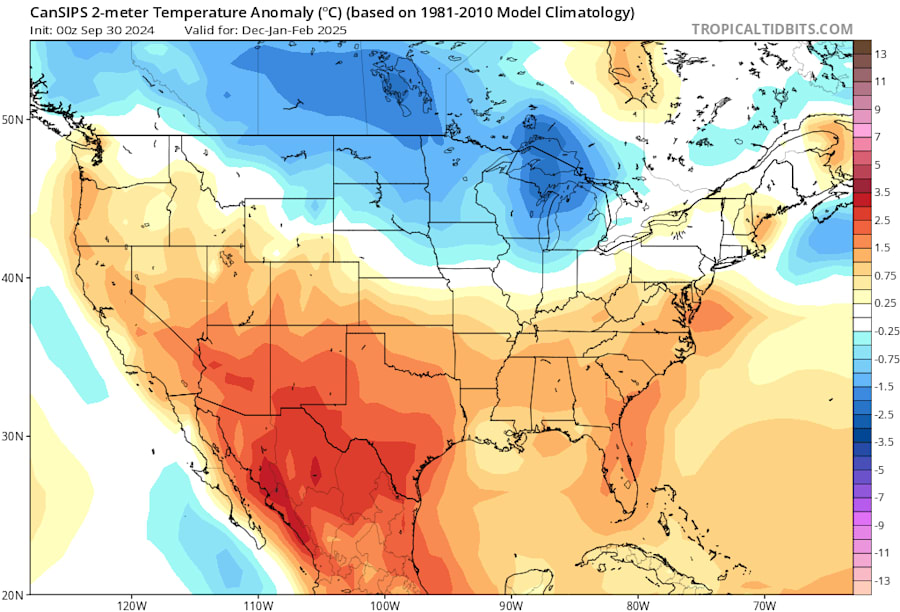ORLANDO, Fla. – Last September we told you that the winter of 2023-24 would be vastly different from a typical Florida. It turned out to be just that, with clouds, rain and cool weather dominating from November through late in the season.
El Niño was largely to blame for keeping the Sunshine State not-so-sunny last winter.
For the upcoming winter, La Niña is expected to take over.
The developing La Niña is one of the reasons for the extremely active and back-loaded hurricane season.
La Niña during the summer typically means a more active hurricane season. For the winter in Florida, it is typically drier and warmer overall. They key word is overall.
That is what we would expect to happen during the winter of 2024-25.
Factors for warm and dry winter:
- La Niña developing
- Warm ocean temperatures surrounding Florida
Long-range models also paint the picture of a warm and dry winter as a whole.

During La Niña, the jet stream tends to reside across the nation’s mid section. This keeps the colder air bottled up in the north and allows for warmer air to surge into Florida.

This pattern is also bad news for snow-lovers along the northeast I-95 corridor. The typical big snowstorms and severe weather events in the South are more frequently born during El Niño years.

While it was on the cooler side more-often-than-not during the afternoon last winter, it wasn’t frigid overnight. That is because of the stubborn cloud cover that was around for a good chunk of the winter. The extra cloud cover was a direct biproduct of El Niño. At night, clouds act as an electric blanket preventing the warmth generated from the day from escaping, while also radiating their own warmth to the surface.
With a drier pattern, less clouds will be around and, therefore, temperatures will be able to drop faster at night. When the air is drier, temperatures can also be colder.
During the last La Niña winter, during the 2022-23 season, the combination of December, January and February was approximately 4 degrees warmer than average from an afternoon, overnight and average temperature perspective. Embedded in the overall warmth lied two nights that dipped below freezing in the Orlando area. Two additional nights fell just shy of 32 degrees.
The coldest night last winter was 38 degrees in the Orlando area. That temperature marked the only time the Orlando area slipped below 40 degrees all winter.
Bottom line:
Find the shades, but also have the extra blanket on standby.
While overall the winter will likely be warm. comfortable and dry with much more sunshine than last winter, there should be a couple of pretty decent cold shots plunging down the peninsula.





